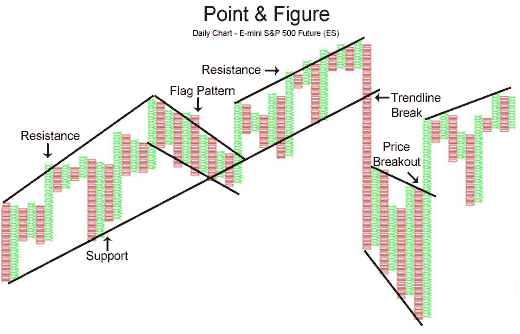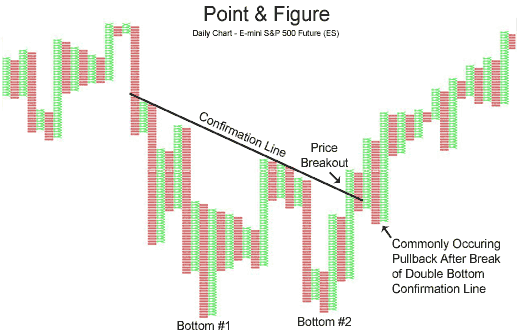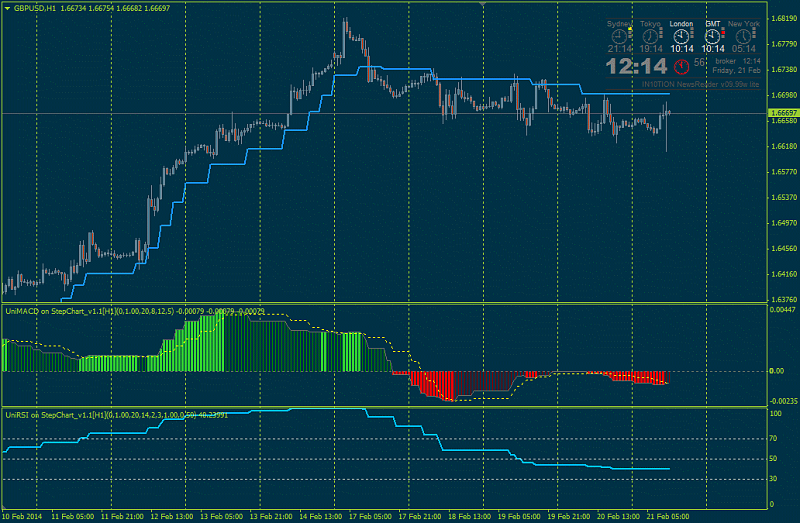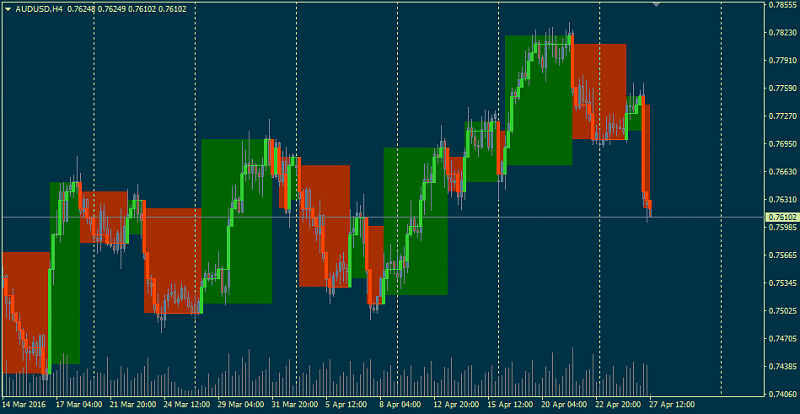Point & Figure Charting
Point & Figure Charting reduces the importance of time on a chart and instead focuses on price movements. Point & Figure charts are made up of X's and O's, X's being new highs and O's being new lows. There are two inputs to a Point & Figure chart:
- Box Size: The size of movement required to add an "X" or an "O". For example, a stock at a price of $20 may have a box size of $1. This means that an increase from $20.01 to a high of $21.34 means another "X" is added. If the high price only increased to $20.99, then another "X" is not added because the stock didn't close another box size ($1) more.
- Reversal Amount: The size of reversal before another column is added to a Point & Figure chart. To illustrate, if the reversal amount is $3, then the $20 stock would have to fall down to $17 before a new column (in this example of O's) would be started.
One of the main uses for Point & Figure charts, and the one emphasized in this section, is that Point & Figure charts make it easier for traders to see classic chart patterns. In the chart below of the E-mini S&P 500 Future, the Point & Figure chart emphasized support and resistance lines as well as areas of price breakouts:
Again, the Point & Figure chart makes it easy for traders to see the double bottom pattern below in the chart of the E-mini S&P 500 Futures contract:
The e-mini chart above illustrates the two bottoms of the double bottom pattern, as well as the confirmation line that is pierced, resulting in a buying opportunity.
Point & Figure is a very unique way to plot market action. The strongsuit of Point & Figure charting is that it eliminates the element of time and focuses on what is truly important - price


 17Likes
17Likes LinkBack URL
LinkBack URL About LinkBacks
About LinkBacks













 Reply With Quote
Reply With Quote







Bookmarks